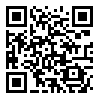مجله رویش روانشناسی از دادن گواهیهای کاغذی معذور است. لطفا تقاضا نکنید. همه گواهی ها در صفحه شخصی کاربران موجود است.
year 14, Issue 5 (Summer 2025 2025)
Rooyesh 2025, 14(5): 209-220 |
Back to browse issues page
Download citation:
BibTeX | RIS | EndNote | Medlars | ProCite | Reference Manager | RefWorks
Send citation to:



BibTeX | RIS | EndNote | Medlars | ProCite | Reference Manager | RefWorks
Send citation to:
Ahmadi A, Zolfaghari A, Jahangiri M M. (2025). The effectiveness of the Self-Monitoring of Attention on Accuracy and Cognitive Information Processing Speed in girl students with Dyscalculia. Rooyesh. 14(5), 209-220.
URL: http://frooyesh.ir/article-1-6277-en.html
URL: http://frooyesh.ir/article-1-6277-en.html
1- Department of Psychology, Ar.C., Islamic Azad University, Arak, Iran.
2- Department of Psychology, Tu. C., Islamic Azad University, Tuyserkan, Iran. ,Ar.zolfaghari@iau.ac.ir
2- Department of Psychology, Tu. C., Islamic Azad University, Tuyserkan, Iran. ,
Abstract: (486 Views)
The present study aimed to determine the effectiveness of the self-monitoring of the attention training program on the accuracy and cognitive information processing speed in girls with dyscalculia. The research method was a quasi-experimental study with a pre-test-post-test design and a control group with a three-month follow-up period. The statistical population included girls with dyscalculia in the first grade, referred to the Boroujerd City Disorders Center in 2024. The research sample included 30 girls students who were selected purposively based on entry criteria and randomly assigned to the experimental and control groups (15 people in each group). The experimental group underwent 12 sessions of the self-monitoring of attention training program. Data collection was performed using the Wechsler Intelligence Scale for Children-IV (WISC-IV, Wechsler, 2003). Data analysis was done using the repeated measurement variance analysis method. The findings showed that there was a significant difference at the 0.001 level between the pre-test and post-test in the accuracy and cognitive information processing speed in the experimental and control groups. There was no statistically significant difference at the 0.001 level between the post-test and follow-up means in the experimental group. The results were maintained during the follow-up period. Overall, the results of the present study focus on self-monitoring of attention as a strategy and a promising point for improving the accuracy and speed of cognitive information processing, and it can be used to address cognitive problems (specifically, the accuracy and cognitive information processing speed) in students with dyscalculia.
Type of Article: Applicable |
Subject:
General Psychology
Received: 2025/05/11 | Accepted: 2025/07/6 | ePublished: 2025/08/1
Received: 2025/05/11 | Accepted: 2025/07/6 | ePublished: 2025/08/1
Send email to the article author
| Rights and permissions | |
 |
This work is licensed under a Creative Commons Attribution-NonCommercial 4.0 International License. |





